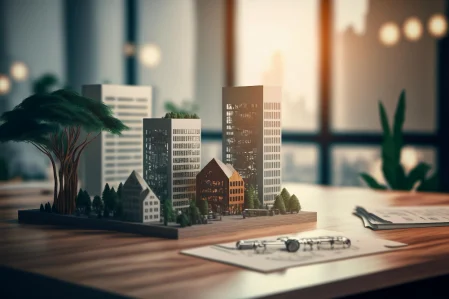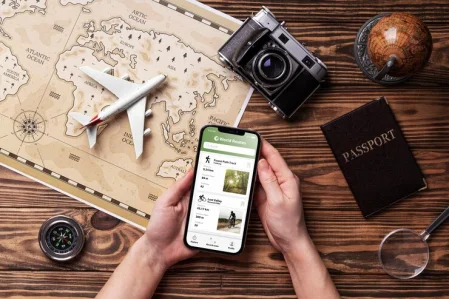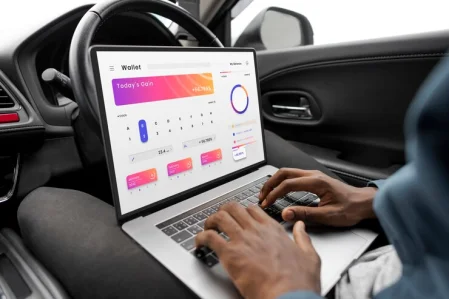A website or an app is essentially made up of two major elements: the front end, the interface that a user sees and interacts with, and the backend, which includes all activities taking place behind the app or website. The tools that make the development process easier toward this end are called backend frameworks. This article is set to discuss the top ten backend frameworks and what exactly they are, how they work, and what are their pros and cons of using them.
What are Backend Frameworks?
A backend framework is a set of tools and libraries to help build the server side of an application. It is where the real core lies: the handling of data, storage of information, and ensuring the wheels don’t come off. Backend frameworks help in that they have pre-written code and structure that allows a developer to work much faster, code much better, and keep everything more secure.
Types of Backend Frameworks
There are two main types of backend frameworks: Full-Stack Frameworks and Microframeworks.
- Full stack Frameworks: This type of framework will provide you with an entire application—front through back. They are equipped with many built-in functionalities like user authentication, database consignment, and template engines. Full-stack frameworks are potent and feature-laden, though they might add to the complexity of use.
- Microframeworks: Microframeworks do much less or come with essential tools for backend development, while frameworks have more features because they’re built with microframeworks. Compared to microframeworks, the developer can add the features he/she needs. Microframeworks are lightweight, easy to learn, and easy to use, but may require more setup.
Top 10 Backend Frameworks
Now let’s dig into the list of top-end frameworks developers tend to use. These frameworks have gained popularity due to their robust features, scalability, and ability to streamline the development process.
1. Django
Django is a high-level Python framework used for helping one to develop heavy web applications very fast and easily. This has various built-in functionalities like Admin Panel, User Authentication, and Database Manipulation.
- Type: Full-Stack
- Language: Python
Advantages of Django
- Built-in Admin Panel: Django has an out-of-the-box admin panel that helps one manage application data with ease.
- Security: Django uses the best levels of security practices, it also guards against very common threats like SQL injections and cross-site scripting, among many more.
- Rapid Development: With its “batteries included” philosophy, Django allows fast development and deployment of web applications.
Disadvantages of Django
- Monolithic Structure: This close integration in Django can sometimes feel overwhelming for smaller projects.
- Steeper Learning Curve: With a great deal of functionalities already implemented, some beginners may find a little steep learning curve for Django.
- Less Flexibility: The framework may be seen to reduce flexibility for developers looking to have more control over their project structure.
2.Express.js
It is a lightweight web framework for Node.js. In reality, this is the preferred structure for many developers, since it has several built-in utilities that make things simple yet robust for the construction of APIs.
- Type: Microframework
- Language: JavaScript – Node.js
Advantages of Express.js
- Simplicity: It’s based on a minimalist concept, which brings lightness to understanding and using it.
- Flexible: The flexibility of Middleware here offers optional middleware for request/response handling.
- Scalability: Quite efficient in scalable applications, like creating RESTful APIs.
Also Read: Best Languages to Develop REST APIs
Disadvantages of Express.js
- Lack of Structure: Express.js is unopinionated, so it doesn’t enforce any kind of project structure, which most of the time makes codebases poorly structured.
- Manual Handling: Security and integration with the database are other one of those things that a developer has to handle themselves, while many more modern web development frameworks do this automatically.
- Fewer Built-In Features: It has fewer built-in features compared to the more comprehensive frameworks.
3. Ruby on Rails
Ruby on Rails is a type of web application development framework in the type of MVC (Model View Controller). It adheres to a principal named “Convention over Configuration,” which makes it possible to develop web applications with less code and is a gem for fast development.
- Type: Full-Stack
- Language: Ruby
Advantages of Ruby on Rails
- Rapid Development: Convention over Configuration in Rails reduces the time taken to code and hence development in Rails is quite fast.
- Rich Libraries: Thousands of pre-built libraries (gems) make very complicated tasks easy using Rails.
- Strong Community: As the Rails community is quite strong, documentation, tutorials, and plugins are widely available.
Disadvantages of Ruby on Rails
- Performance Issues: The applications might struggle with performance issues when under heavy load.
- Learning Curve: While it’s easy to know Ruby, Rails conventions and principles need some experience to be excellent.
- Monolithic Approach: The Rails opinionated structure might go against projects needing more flexibility.
4. Laravel
Laravel is a highly great PHP framework based on elegant syntax and powerful features. It properly structures the entire PHP development methodology so a developer can enjoy developing an application using Laravel.
- Type: Full-Stack
- Language: PHP
Advantages of Laravel
- Elegant: The syntax of the code is pure and simple, allowing developers to take interest in coding efficiently.
- Tools: Artisan CLI, Eloquent ORM, and Blade templating engine—to power-packed tools, are included.
- Support: Very active community and an extensive ecosystem of packages and documentation.
Disadvantages of Laravel
- Performance: Although Laravel is a highly powerful PHP framework, it may fall short if your application requires extreme performance.
- Learning Curve: Since Laravel is advanced and feature-packed, its usage might be confusing for new learners and beginners in PHP or the Laravel framework.
- Overhead: Being chock-a-block with features can sometimes result in Laravel having an overhead. It might not be suitable for lean or very small applications.
5. Spring Boot
Spring Boot is a game-changing new way to make getting up and running with new Java applications quick. Packs the needed ability for production databases and applications within their design and executing abilities and even keeping them some.
- Type: Full-Stack
- Language: Java
Advantages of Spring Boot
- Spring Boot: It has never been easier to make an application and databases, execute them, and even keep them moderately secure.
- Comprehensive Documentation: The documentation for it is so complete and thorough that it will have a huge impact on how one learns and writes.
- Scalability: Spring Boot applications are very scalable and would be able to handle large applications without any problem. However, it may handle heavy applications with some low efficiencies.
Disadvantages of Spring Boot
- Complex Configuration: This is one of the major cons of Spring Boot. While working with it, configuration can be as complex as in simple Java-based applications, albeit for a complete newbie.
- Memory: It has the potential to consume much memory, hence making it not the best in low-resource categories.
- Initial Overhead: The framework is too heavy for any simple or small-scale project.
6. Flask
Flask has a lightweight Python microframework in which developers find flexibility and control. The framework is very simple and appropriate for small projects.
- Type: Microframework
- Language: Python
Advantages of Flask
- Simplicity: Flask is very easy and simple to learn and use. It is perfect for beginners.
- Flexibility: Developers are not tied to structure applications in any particular way.
- Lightweight: As said, it is a microframework with pretty much low or minimal dependency, so it performs faster.
Disadvantages of Flask
- Few built-in: Flask is not built for huge projects, as it lacks a lot of built-in tools and support. To work on heavy projects, you have to work with additional libraries.
- Lacks in features: Flask might not force you, but it is not necessarily the best choice for heavier applications that require more inbuilt tools.
- Manual Work: Features have to be implemented manually. In the case of other frameworks, features are already built-in, for example, authentication in Django.
7. ASP.NET Core
ASP.NET Core is a high-performance framework to build modern, cloud-based applications. It’s perfect for developers who are already familiar with Microsoft tools.
- Type: Full-Stack
- Language: C#
Advantages of ASP.NET Core
- Cross-Platform: It allows developers to make applications that will run on Windows, macOS, and Linux.
- High Performance: In its performance, it is high and suitable for tough applications.
- IDE: Its great integration with Visual Studio makes a powerful and efficient development environment.
Disadvantages of ASP.NET Core
- Steep Learning Curve: Developers new to C# or .NET may find that the learning curve is quite steep. Building and Configuring ASP.NET Core is painful; ASP.NET Core can be a bit challenging to build and configure. This is especially the case for beginners.
- Cost of Microsoft Ecosystem: Although ASP.NET Core itself is open source, some of the other tools under the Microsoft ecosystem might end up being expensive.
8. Koa.js
Koa.js is an expressive, more robust microframework from the people who made Express. It works to build APIs or web applications.
- Type: Microframework
- Language: JavaScript (Node.js)
Advantages of Koa.js
- Lightweight: It is written minimally, making it neat. Fast performance and easy for developers to maintain the code.
- Introducing Modern Programming Techniques: Koa.js introduces async/await programmatically, making programming easier while ensuring clean code.
- Modular Design: Koa.js always encourages modular components, making room for flexibility and customization.
Disadvantages of Koa.js
- Lack of Middleware: Unlike Express.js, Koa does not have built-in middleware, so searching for the coming features would give developers some extra manual work.
- Less Community Support: Compared with the other frameworks, Koa.js has less community, which means fewer resources and plugins are available for use.
- Learning Curve: Those who already know Express.js will take a while to get used to the new way of Koa.js.
9. Phoenix
Phoenix, a fast, reliable open-source full-stack web framework, is developed for building real-time applications.
- Type: Full-stack
- Language: Elixir
Advantages of Phoenix
- Real-time processing: As it is said, Phoenix is wonderful for real-time application development, e.g. for chat applications or for ordering live tracking.
- High Speed: Designed on the Elixir language, Phoenix remains very speed-efficient in terms of working with an extensive number of users at a go.
- Scalability: Phoenix would work with as many connections as possible, making it suitable for high-scale applications.
Disadvantages of Phoenix
- Smaller Ecosystem: While Phoenix has a smaller ecosystem compared to more popular frameworks like Django or Rails, it still gets the job done.
- High Learning Curve: New developers to Elixir may find it hard to learn both the language and framework.
- Less Adoption: Phoenix has adopted less, which indicates it does not have as many libraries or community support as Elixir has.
10. CakePHP
CakePHP is a model-controller-view-based rapid web application development framework that uses the concept of MVC to help developers write fewer codes while developing web applications very quickly.
- Type: Full-Stack
- Language: PHP
Advantages of CakePHP
- It uses convention to reduce the need for more configuration.
- It has some built-in facilities. For example, database access, authentication, and validation tools.
- Rapid Development: CakePHP supports rapid development; thus, it is a good choice for developers who work on assignments where they need to finish applications in a very short duration.
Cons of CakePHP
- Performance: CakePHP might not be the right choice for you with high performance.
- Less Flexibility: Over Conventional
Conclusion
Ultimately, the choice of the right backend framework depends on the needs of your project and your comfort level with different programming languages. Each one of these 10 backend frameworks has its positives and negatives. You can then make an informed choice for your next project, knowing what each framework offers. Remember, the best framework is the one that fits your project's demands and productivity.


 Healthcare App Development Services
Healthcare App Development Services
 Real Estate Web Development Services
Real Estate Web Development Services
 E-Commerce App Development Services
E-Commerce App Development Services E-Commerce Web Development Services
E-Commerce Web Development Services Blockchain E-commerce Development Company
Blockchain E-commerce Development Company
 Fintech App Development Services
Fintech App Development Services Fintech Web Development
Fintech Web Development Blockchain Fintech Development Company
Blockchain Fintech Development Company
 E-Learning App Development Services
E-Learning App Development Services
 Restaurant App Development Company
Restaurant App Development Company
 Mobile Game Development Company
Mobile Game Development Company
 Travel App Development Company
Travel App Development Company
 Automotive Web Design
Automotive Web Design
 AI Traffic Management System
AI Traffic Management System
 AI Inventory Management Software
AI Inventory Management Software
 AI Software Development
AI Software Development  AI Development Company
AI Development Company  AI App Development Services
AI App Development Services  ChatGPT integration services
ChatGPT integration services  AI Integration Services
AI Integration Services  Generative AI Development Services
Generative AI Development Services  Natural Language Processing Company
Natural Language Processing Company Machine Learning Development
Machine Learning Development  Machine learning consulting services
Machine learning consulting services  Blockchain Development
Blockchain Development  Blockchain Software Development
Blockchain Software Development  Smart Contract Development Company
Smart Contract Development Company  NFT Marketplace Development Services
NFT Marketplace Development Services  Asset Tokenization Company
Asset Tokenization Company DeFi Wallet Development Company
DeFi Wallet Development Company Mobile App Development
Mobile App Development  IOS App Development
IOS App Development  Android App Development
Android App Development  Cross-Platform App Development
Cross-Platform App Development  Augmented Reality (AR) App Development
Augmented Reality (AR) App Development  Virtual Reality (VR) App Development
Virtual Reality (VR) App Development  Web App Development
Web App Development  SaaS App Development
SaaS App Development Flutter
Flutter  React Native
React Native  Swift (IOS)
Swift (IOS)  Kotlin (Android)
Kotlin (Android)  Mean Stack Development
Mean Stack Development  AngularJS Development
AngularJS Development  MongoDB Development
MongoDB Development  Nodejs Development
Nodejs Development  Database Development
Database Development Ruby on Rails Development
Ruby on Rails Development Expressjs Development
Expressjs Development  Full Stack Development
Full Stack Development  Web Development Services
Web Development Services  Laravel Development
Laravel Development  LAMP Development
LAMP Development  Custom PHP Development
Custom PHP Development  .Net Development
.Net Development  User Experience Design Services
User Experience Design Services  User Interface Design Services
User Interface Design Services  Automated Testing
Automated Testing  Manual Testing
Manual Testing  Digital Marketing Services
Digital Marketing Services 
 Ride-Sharing And Taxi Services
Ride-Sharing And Taxi Services Food Delivery Services
Food Delivery Services Grocery Delivery Services
Grocery Delivery Services Transportation And Logistics
Transportation And Logistics Car Wash App
Car Wash App Home Services App
Home Services App ERP Development Services
ERP Development Services CMS Development Services
CMS Development Services LMS Development
LMS Development CRM Development
CRM Development DevOps Development Services
DevOps Development Services AI Business Solutions
AI Business Solutions AI Cloud Solutions
AI Cloud Solutions AI Chatbot Development
AI Chatbot Development API Development
API Development Blockchain Product Development
Blockchain Product Development Cryptocurrency Wallet Development
Cryptocurrency Wallet Development About Talentelgia
About Talentelgia  Our Team
Our Team  Our Culture
Our Culture 
 Healthcare App Development Services
Healthcare App Development Services Real Estate Web Development Services
Real Estate Web Development Services E-Commerce App Development Services
E-Commerce App Development Services E-Commerce Web Development Services
E-Commerce Web Development Services Blockchain E-commerce
Development Company
Blockchain E-commerce
Development Company Fintech App Development Services
Fintech App Development Services Finance Web Development
Finance Web Development Blockchain Fintech
Development Company
Blockchain Fintech
Development Company E-Learning App Development Services
E-Learning App Development Services Restaurant App Development Company
Restaurant App Development Company Mobile Game Development Company
Mobile Game Development Company Travel App Development Company
Travel App Development Company Automotive Web Design
Automotive Web Design AI Traffic Management System
AI Traffic Management System AI Inventory Management Software
AI Inventory Management Software AI Software Development
AI Software Development AI Development Company
AI Development Company ChatGPT integration services
ChatGPT integration services AI Integration Services
AI Integration Services Machine Learning Development
Machine Learning Development Machine learning consulting services
Machine learning consulting services Blockchain Development
Blockchain Development Blockchain Software Development
Blockchain Software Development Smart contract development company
Smart contract development company NFT marketplace development services
NFT marketplace development services IOS App Development
IOS App Development Android App Development
Android App Development Cross-Platform App Development
Cross-Platform App Development Augmented Reality (AR) App
Development
Augmented Reality (AR) App
Development Virtual Reality (VR) App Development
Virtual Reality (VR) App Development Web App Development
Web App Development Flutter
Flutter React
Native
React
Native Swift
(IOS)
Swift
(IOS) Kotlin (Android)
Kotlin (Android) MEAN Stack Development
MEAN Stack Development AngularJS Development
AngularJS Development MongoDB Development
MongoDB Development Nodejs Development
Nodejs Development Database development services
Database development services Ruby on Rails Development services
Ruby on Rails Development services Expressjs Development
Expressjs Development Full Stack Development
Full Stack Development Web Development Services
Web Development Services Laravel Development
Laravel Development LAMP
Development
LAMP
Development Custom PHP Development
Custom PHP Development User Experience Design Services
User Experience Design Services User Interface Design Services
User Interface Design Services Automated Testing
Automated Testing Manual
Testing
Manual
Testing About Talentelgia
About Talentelgia Our Team
Our Team Our Culture
Our Culture

















 Write us on:
Write us on:  Business queries:
Business queries:  HR:
HR: 





